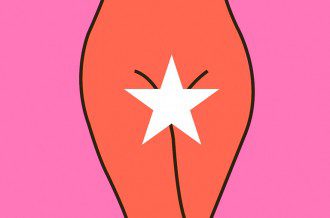Contributing Writer for Wake Up World
“To understand the vagina properly is to realize that it is not only coextensive with the female brain, but is also, essentially, part of the female soul.” ~ Naomi Wolf
As a culture, we typically don’t view female anatomy as something intricately linked with creativity, power, drive, focus, courage or motivation. Either it’s something to be shamed through religious traditions or exploited with pornography, advertising and the media at large. Even so, the 1960’s saw a movement towards accepting and admiring the female form as “goddess.” We still see small pockets of it today. And the idea of the “muse” has a long history of inspiring some of the greatest art known to man.
[pro_ad_display_adzone id=”110028″]
Up until this point, however, most of the glorification of the female body has dealt squarely in the realm of external beauty. Author Naomi Wolf believes this stance is severely limited, and in her book “Vagina: A New Biography“, she challenges some of our most ingrained assumptions about feminine sexuality and form, revealing how a woman’s bodily experience has far reaching influence over every aspect of life.
The Power of the Muse
A muse is typically classified as a woman who provides, by her very existence, a source of inspiration for an artist. In Greek and Roman mythology, it refers to nine goddesses — all daughters of Zeus and Mnemosyne — who preside over over the arts and sciences. They include:
Calliope (epic poetry), Clio (history), Euterpe (flute playing and lyric poetry), Terpsichore (choral dancing and song), Erato (lyre playing and lyric poetry), Melpomene (tragedy), Thalia (comedy and light verse), Polyhymnia (hymns, and later mime), and Urania (astronomy)
In our modern era, the muse has a slightly different connotation. Writes Germaine Greer for the Guardian:
“A muse is anything but a paid model. The muse in her purest aspect is the feminine part of the male artist, with which he must have intercourse if he is to bring into being a new work. She is the anima to his animus, the yin to his yang, except that, in a reversal of gender roles, she penetrates or inspires him and he gestates and brings forth, from the womb of the mind. Painters don’t claim muses until painting begins to take itself as seriously as poetry.”
The traditional role of a muse is not one of physical union. Instead, she inspires the mind — which often leads to breakthroughs in science or phenomenal works of art. Throughout history, poets and writers, painters and sculptors have laid claim to the virginal muse. Many times, the muse was a model, confident, intellectual equal or a combination. But there are always exceptions. Andrea del Sarto, an Italian painter born in 1486, married his muse Lucrezia, while the wife of RB Kitaj, Sandra Fisher, inspired the artist beyond measure after her untimely death.
With the very definition of the muse allocated to the feminine, we may question if there is a male equivalent. After all, creative breakthroughs are not exclusively male. So how do women tap into this mysterious realm of magical inspiration? As it turns out, the answer is much more earthy and physical. To be specific, it all begins with the vagina.
The Mind-Body Connection and Creativity
Wolf believes that a woman’s inspiration and creativity are directly tied to the interdependence of the brain, pelvic nerve and vagina.
“Female sexual pleasure, rightly understood, is not just about sexuality, or just about pleasure. It serves, also, as a medium of female self-knowledge and hopefulness; female creativity and courage; female focus and initiative; female bliss and transcendence; and as medium of a sensibility that feels very much like freedom. To understand the vagina properly is to realize that it is not only coextensive with the female brain, but is also, essentially, part of the female soul. […]
“Once one understands what scientists at the most advanced laboratories and clinics around the world are confirming — that the vagina and the brain are essentially one network, or “one whole system,” as they tend to put it, and that the vagina mediates female confidence, creativity, and sense of transcendence — the answers to many of these seeming mysteries fall into place.”
The female pelvic nerve acts as an information superhighway that fans out from the base of the spinal cord to the cervix, which connects to the brain and regulates sexual response. For each woman, this wiring differs immensely and is highly complex — helping to explain why there is such an enormous range of sexual triggers for orgasm. In contrast, the male pelvic neural network is relatively simple and arranged in a grid that encircles the penis. For men, orgasm follows a linear path — for women, it’s labyrinthian.
According to Wolf, for a women to reach a state of orgasm, she needs to feel supported — by her culture and her lover. When she anticipates pleasurable sex in this context, it boosts dopamine levels in her brain — a neurotransmitter that increases drive, focus, energy, motivation and assertiveness. And when a woman has an orgasm, opioids are released, fostering feelings of transcendence. Wolf interviewed women to see if there was a connection between creativity and orgasm. What she found from her inquiries is that there was, in fact, a strong correlation between heightened creative experiences and orgasm and/or sexual awakening.
For Wolf, the bottom line comes down to this: When a woman feels safe, relaxed and connected to her lover, she is able to access the realm of inspiration more readily, as well as the courage and confidence to bring her vision — in whatever form it takes — out into the world.
Naomi Wolf on her book, ‘Vagina: A New Biography’
Article sources:
- “Vagina: A New Biography” Naomi Wolf, Virago Publishing, 2013
- https://www.brainpickings.org/2013/09/23/naomi-wolf-vagina
- http://www.nytimes.com/2012/09/20/fashion/naomi-wolf-on-her-new-book-vagina.html?_r=0
- http://www.theguardian.com/books/2012/sep/16/vagina-biography-naomi-wolf-review
- http://www.culturalweekly.com/naomi-wolf-on-pleasure-and-creativity
About the author:
 Carolanne enthusiastically believes if we want to see change in the world, we need to be the change. As a nutritionist, natural foods chef and wellness coach, Carolanne has encouraged others to embrace a healthy lifestyle of organic living, gratefulness and joyful orientation for over 13 years.
Carolanne enthusiastically believes if we want to see change in the world, we need to be the change. As a nutritionist, natural foods chef and wellness coach, Carolanne has encouraged others to embrace a healthy lifestyle of organic living, gratefulness and joyful orientation for over 13 years.
Through her website Thrive-Living.net, she looks forward to connecting with other like-minded people from around the world who share a similar vision.
You can also follow Carolanne on Facebook, Twitter and Pinterest.
Further reading from Carolanne Wright:
- Seed Bombs: A Creative (and Fun) Mission to Save the Bees and Butterflies
- Mind Control, Subliminal Messages and the Brainwashing of America
- Autistic Boy with Higher IQ Than Einstein Discovers Gift After Removal from State-Run Therapy
- Monsanto Charged with Crimes Against Nature and Humanity – Set to Stand Trial in 2016
- Dr Sebi: The Man Who Cures Aids, Cancer, Diabetes and More
- Politicians in California May Soon be Forced to Wear Corporate Sponsor Patches Like Nascar Drivers
- Plastic-Eating Mushroom Discovered in the Amazon Rainforest — A Solution for Our Trash Saturated World?
- Big Pharma and Organized Crime — They are More Similar Than You May Think
- Over 100 Scientific Studies Agree: Cannabis Annihilates Cancer
- Emotional Energetic Healing: The Future of Medicine is Here
- Why Every Parent Should Consider Unschooling
- The Greenhouse of the Future: Grow Your Own Food Year-Round With This Revolutionary System
- First U.S. City Produces More Electricity Than It Uses — With 100% Renewable Technology
[pro_ad_display_adzone id=”110025″]
[pro_ad_display_adzone id=”110027″]







